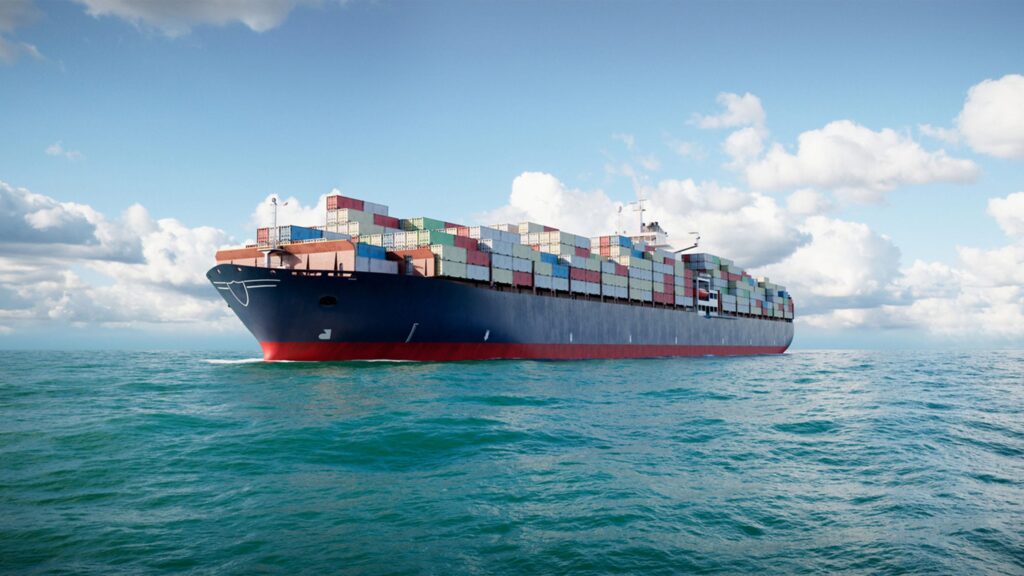Posted On July 16, 2024
Supply chain slowdowns can cost companies 6-10% of their annual revenue, according to Economist Impact. While achieving a perfect supply chain is a myth, you can control your level of preparedness.
Understanding the supply chain
Simply put, the supply chain is the journey a product takes from raw materials to the customer’s hands. It includes everything from sourcing, manufacturing and logistics to distribution and retail. Each link in that chain must function smoothly to ensure products are delivered on time and on budget.
But the supply chain can also be affected by a combination of internal and external risks.
Common disruptions that affect the supply chain
Good luck trying to predict when something will go wrong. Disruptions can be as minor as a slight hiccup on a factory line or as significant as a global crisis, but they always catch a business off guard.
Natural disasters
Hurricanes, earthquakes and floods can severely impact logistics and operations. Even seasonal extreme weather like heat waves and arctic blasts can create supply chain headaches, energy shortages and transportation delays. Hurricane Katrina alone caused $125 billion in economic losses and disrupted supply chains across multiple industries. Natural disasters and external risks are often unpredictable and require businesses to have contingency plans in place to manage the fallout effectively.

Economic, infrastructure and political factors
External factors like tariffs, trade wars and political instability are examples of economic and political factors that can disrupt global supply chains. Infrastructure factors, either catastrophic (like the recent Baltimore bridge collapse) or mundane (as in ongoing highway construction zones) can create time-consuming and expensive reroutes, significantly delaying logistics and deliveries. Geopolitical disruptions can alter trade routes, cut off material suppliers across international borders, increase costs and necessitate adjustments in supply chain strategies.
Operational issues
Even your facilities’ internal operations can become disruption factors, despite best efforts. Inefficient processes—from poor communication to over-reliance on manual operations—can lead to delays and errors. Machinery breakdowns and labor strikes (or labor shortages) are common internal disruptions that can halt production and distribution processes. More opportunities for disruption stem from poor warehouse and inventory management. Stockouts or overstocking and inefficiently utilizing warehouse space can lead to congestion, delays and disruption in the flow of goods.
Automating internal processes to remove bottlenecks and human error while using warehouse space intelligently can keep operations moving smoothly.
Effective management and maintenance protocols could help minimize internal risks and work toward reducing supply chain disruptions.
Financial implications of supply chain disruptions
Whenever a disruption happens anywhere in the supply chain, the first and most noticeable concerns are lost revenue and additional expenses. Disruptions can stop you from selling goods or services, resulting in a direct decrease in income. They may also lead to extra costs, such as hiring temporary staff to cover for the disruption, expediting shipments to meet deadlines or offering discounts to appease frustrated customers. While these consequences are the most obvious, there are others worth considering:
Production slowdowns
Disruptions create production slowdowns, which limit a company’s ability to produce goods, leading to shortages and missed sales opportunities. This can happen due to a lack of raw materials, labor shortages or transportation bottlenecks.
Delivery delays
Even if a company can produce goods, disruptions can make it difficult to get them to customers on time. This can be caused by port congestion, shipping delays or a shortage of trucks or containers.
Inventory management challenges
Companies may struggle to maintain optimal inventory levels due to disruptions. They might have to hold onto more inventory than usual to avoid stockouts, which ties up capital and increases storage costs. On the other hand, running out of stock leads to lost sales and unhappy customers.
Increased cost of goods sold (COGS)
Disruptions can make it harder to get raw materials, driving up the cost of goods sold (COGS). If a trusted partner is without the raw materials, companies may need to resort to expedited shipping or air freight, which are more expensive than traditional methods.
Inefficiencies
Disruptions create inefficiencies in the supply chain, such as increased handling and storage costs due to congestion or changes in how goods are shipped. Companies may find themselves substituting more expensive raw materials that take longer to arrive and cost more to ship.
Customer dissatisfaction
The lack of reliable goods, or increased pricing of those goods, can lead to frustrated customers. The average consumer may blame the company for delays or shortages as they do not have an understanding of the supply chain. Negative consumer sentiment can damage a company’s reputation and potentially lead to lost future sales.
Ultimately, financial challenges create a number of red flags through any supply chain disruption. Production slowdowns and delivery delays can lead to lost sales, which directly impacts a company’s revenue in the short and long term. When a disruption isn’t a single event, but instead is a global or extended economic situation, a company’s solvency can end up on the line.
Planning for and managing supply chain disruptions effectively
Disruptions are a part of any system that relies on multiple suppliers, pieces and moving parts. Any one part of the global supply chain is vulnerable and can cause problems anywhere down the line.
Building supply chain resilience is crucial to a successful business model.
If you know supply chain disruptions are inevitable, having a concrete plan to make your organization as “disruption-proof” as possible can ensure you are prepared to weather any storm, figuratively or literally.
Steps to take when a disruption occurs:
When a supply chain disruption happens, remember to pause and focus on actions that will have far-reaching outcomes. Laying the groundwork for smooth transitions will keep you ahead of the competition.
When a supply chain disruption occurs in your network, follow these steps:
- Assess the situation. Gather as much information as you can on the nature of the disruption and the extent of how it will touch your efforts. Identify the root cause, the specific parts of your supply chain that are impacted and the potential duration of the issue.
- Activate your contingency plan. This plan should outline steps to take for different types of disruptions and may include actions like activating backup suppliers, expediting shipments or adjusting production schedules. (More on this later.)
- Communicate effectively and clearly. Keep all stakeholders and providers informed, including customers, suppliers and employees. Be transparent about the situation and the steps you are taking to address it. Regular communication helps to manage expectations and minimize frustration.
- Prioritize critical needs: Identify your most critical needs and focus your resources on getting those products through logistics first. Take stock of your warehouse inventory and the location of goods across your network. You may need to ration inventory or reallocate resources strategically to triage identified needs.
- Explore alternative solutions: Think creatively and look for alternative solutions to keep your part of the supply chain moving despite disruption. This could involve finding new suppliers, using different transportation routes or even redesigning products to use alternative materials.
- Adapt and mitigate: As the situation evolves, be prepared to adapt your approach. The goal is to mitigate the impact of the disruption as much as possible and get your supply chain back on track.
Maintaining operations and keeping shipments as normal as possible (instead of halting them entirely) is vital to minimizing costs and delays. It may take more effort in the short term, but will pay off in consistency and reliability.
Post-disruption supply chain analysis:
Never let a good crisis go to waste. The last step of your contingency plan occurs after things have settled.
Take some time to analyze what happened and identify areas for improvement throughout your process and contingencies. Use this information to be better prepared for future disruptions. Communicate and make sure staff is trained on their part of the plan.
Continuous improvement and adaptation are key to managing potential disruptions effectively.
Building a more resilient supply chain network

We can’t avoid disruption but we can reduce risk.
Instead of trying to predict every potential supply chain disruption, companies need to focus on creating plans to navigate and minimize the impact on their logistics.
Building a resilient supply chain requires proactive measures, such as refined contingency plans for your supply base, strategic sourcing and ensuring end-to-end visibility.
If you haven’t taken the time to build a contingency plan, consider this a prompt to make one. It’s always better to have a plan and not need it than to find yourself without it.
Develop contingency plans
An effective contingency plan should include clear steps for managing disruptions, maintaining operations and communicating with stakeholders. A step-by-step guide for navigating supply chain disruptions (like the one above) can help businesses prepare for unexpected events.
Build safety stocks
Safety stocks act as a buffer against supply chain disruptions. Increasing your stock and supply chain visibility helps keep your business ahead of customer demand so you’re never caught in short supply. Occasionally, shipping a new or substitute product may make more sense than waiting on a product that is delayed indefinitely. Communicate with customers and clients and offer options whenever possible. Effective management of replacement stock ensures that businesses can continue operations without significant delays.
Consider nearshoring your supply chain
Nearshoring has become a more attractive option to reduce the risks associated with long-distance shipping and supply chain networks. Nearshoring involves moving manufacturing to a close-by country to the country’s domestic efforts, like a U.S.-based company migrating its production to Mexico instead of further away in the global supply chain. The biggest tangible benefit to moving production closer to home is no surprise—transit times decrease. A typical transport from Mexico to the U.S. might only take a quarter of the time it would take to ship that same inventory from China, and cost a lot less money.
Leverage forecasting and technology
Leveraging digital tools and other technology for predicting disruptions and conducting vulnerability assessments is crucial. Accurate forecasting helps businesses anticipate potential supply chain shocks and take preemptive action. Flat World’s Pipeline TMS (transportation management system) offers a 360° view of your entire supply chain data. It’s a supply chain management solution that combines carrier rates for quick comparison, generates bills of lading and shipping labels in seconds, and creates electronic pickup requests. With Pipeline, users can view the status of both domestic and international shipments and gain valuable insights through up-to-date reporting.
Any one of these tactics can help support your business through a supply chain disruption, but when used together offer dynamic ways to manage your supply chain and future-proof it for whatever comes your way.
Stay in the know without spending hours reading. Subscribe to our 2 Minutes Flat newsletter.
Partnering with a preferred shipper
Supply chain disruptions are inevitable, but companies can mitigate their impact through proactive measures, robust contingency plans and strong partnerships. By learning from past disruptions and leveraging technology, businesses can build more resilient supply chains that can withstand future challenges and any potential disruption.
It’s about strategically choosing partnerships that enhance your supply chain processes with operational efficiency and market responsiveness. And if you’re wondering where to start, consider a chat with Flat World Global Solutions.
While we can’t completely prevent supply chain disruptions, we can improve supply chain resilience.


